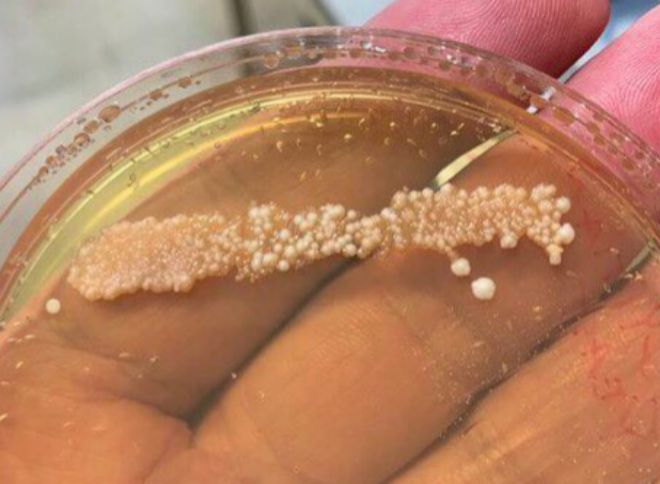- Ancient Egypt: Ramses II pantries are found
- Restoration: The 'lifting' of the Tutankhamen coffin starts
The bread that one day fed the pharaohs has risen. The stubborn determination of an amateur Egyptologist has broken the eternal rest of the last remnants of yeast that, until now, had remained crouched in the pores of ceramic vessels where once, five millennia ago, the loaves were made. "We know a lot about the bread of ancient Egypt and its cooking but there are many questions still pending to be answered," acknowledges EL MUNDO the Egyptologist Serena Love, one of the scientists who has cooperated in the task of reviving the crumb of the pharaohs.
The adventure was born from the will of Seamus Blackley, one of the inventors of the Xbox console, determined to pair two of his passions beyond the technological universe: his fascination with ancient Egypt and his passion for baking, discovered a couple of years ago. years. During his trip he had the help of Love, who battled American museums that have pharaonic collections to achieve the ferment tests. "Museums are very protective of their collections and suspect any unusual research request, as was ours. Obtaining access was a challenge. No one seemed enthusiastic when we sent him the proposal," acknowledges the academic at the American University of Queensland .
The mission was even more risky because it had to convince conservatives. "Our method has not been published yet and we had to guarantee that it was not destructive and that it would not cause any damage to the objects," confirms Love. In the end, two museums in the city of Boston granted the placet so that Love and the microbiologist Richard Bowman paraded through its corridors and gathered samples of vessels from ancient Egypt used to make bread and beer.
Searching in his gut, Bowman identified the microorganism that gives body to the bread , which had hibernated in the pores of the pottery. Injected with the syringe nutrients into the object and extracted the resulting liquid. "It doesn't take long to wake up," Bowman says. With the help of water, old grains and sterilized containers, the expert cultivated the ferment for a week.
The preparation of the loaf and its baking ran at the expense of the developer. To work the miracle, Blackley mixed the yeast with barley, kamut and small spelled, domesticated about 10,000 years ago and the same ingredients used in the Nile country when the pharaohs still governed their designs. "Modern wheat was invented long after these microorganisms went to sleep," Blackley jokes.
And then the experiment had its effect. " A sample of yeast from the Old Kingdom, to which I have added water and unfiltered olive oil . The idea is to make a dough identical to that of 4,500 years ago. The aroma of the ferment is different from everything I have experienced," Blackley reels, who has been unveiling the initiative in his Twitter account.
'Aroma and know incredible'
The adventure, according to its warders, has been simpler than expected. The yeast was not contaminated and the dough grew inside a home oven . Its creator boasts "a cake-shaped crumb, very soft" and "a pleasant structure." "The aroma and taste are amazing. It's very exciting and I'm very surprised that it worked," he slides. The journey, however, has just begun. "We still have a lot to learn. This first bread was an experiment to see if it worked. The scientific results are still pending, " says Love.
His essay, which is now awaiting publication in a scientific journal, has some background. Not a few scientists have tried to reconstruct the bread of antiquity from the containers or seeds found in the excavating sites. The antiquities authority of Israel and three universities in the country used ancient yeast to make a wheat beer with six percent alcohol. Aware of the progress of the trio, a couple of museums have opened the doors and their goal now is to gather samples of yeast from the old, middle and new kingdoms and sequence the genomes to discern genetic drift through millennia in the lands Fertile of Egypt.
The next project, in addition, bets on building a replica of the ceramic vessels in which the bread was once cooked and baked in the old way, following closely the pharaonic recipe. "And then try it with beer too," says Love, excited by the rapid succession of progress. The experience has left them a good taste. "I tried the bread at a breakfast a few days ago. It has a strong flavor, as you would expect from a sourdough, but it is rich and has a light and delicious texture ," the researcher boasts
According to the criteria of The Trust Project
Know more- Science and Health
- science
Science Nuclear hurricane bombs: Donald Trump's proposal to protect the United States
Activism The young Greta Thunberg begins her sailing trip to cross the Atlantic
Pollution Plastic falling from the sky: tiny particles are found even in the Arctic snow

